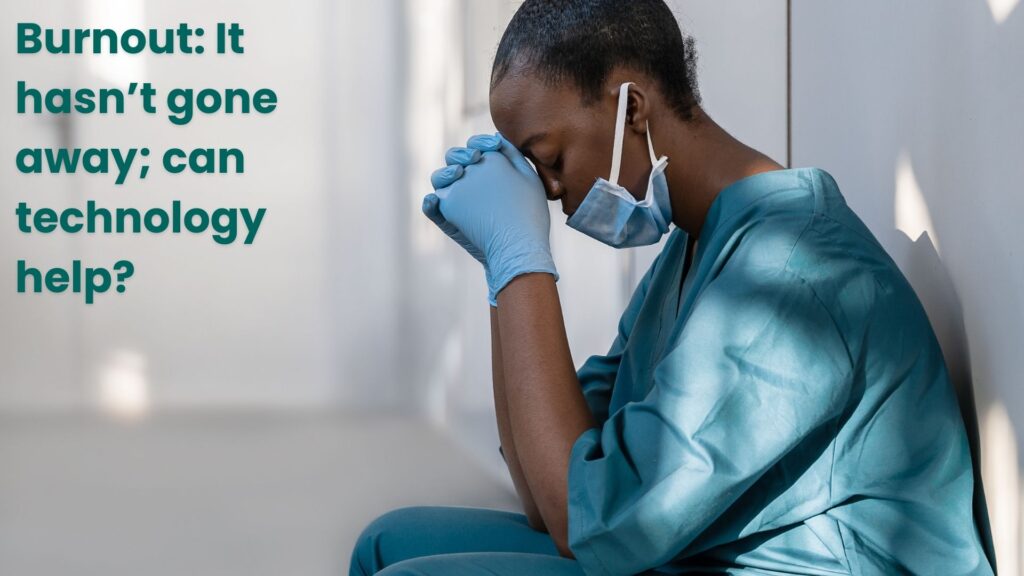February 2023 COVERstory
February 2023 tackles the relationship between clinician burnout and technology. Join HDM as we unpack recent trends and look to the horizon to find ways to alleviate burnout.

From the Editor:
There are multiple reasons why burnout and emotional challenges are causing doctors and nurses to seek to change jobs, professions or retire. Provider organizations are already grappling with staffing shortages – as many as 139,000 physician openings over the next 10 years, and some estimate that the U.S. could have 500,000 nurse openings over the same span.
Technology is related to some of that pressure. User interfaces are hard to learn, and records systems have made it harder to find essential information quickly. And current technology exacerbates clinicians’ challenges around documentation loads, after-hours work and having multiple electronic channels for communication.
But a wide variety of systemic pressures – particularly financial shortfalls facing healthcare organizations, personnel shortages linked to demographics, and psychological stress and politically-based verbal abuse related to the pandemic – all have added fuel to the fire burning through clinicians’ ranks.
HDM this month dives deep into the causes – and potential solutions and reasons for hope – and those leaders striving to upend clinician burnout.
- Fred Bazzoli, Editor in Chief
Key Takeaways
As you dive into this COVERstory, we hope you find it becomes a reference helping you:
- 1. Learn what the latest research shows about the relationship between burnout and technology.
- 2. Understand what the latest research illustrates about burnout trends.
- 3. Recognize the strides that have been made to improve technology to lighten clinicians' loads and mitigate burnout risks.
- 4. Comprehend the tech capabilities that lie on the horizon that may lighten clinician burnout.
FEATURED ARTICLE

Burnout looms as growing crisis that could cripple hands-on care
Documentation and patient loads, clunky technology that doesn’t support care and financial pressures are exacerbating woes that are causing shortages among doctors and nurses... Read the article
Read more:
- • Burnout by the numbers, Health Data Management
- • Resources and organizations for addressing clinician burnout, Health Data Management
RELATED CONTENT

Addressing the human factors behind burnout
Clinicians offer many reasons why they struggle in their professions, but addressing deep-seated, personal concerns may be the best place to start... Read the article
Read more:
-
• We must take care of them, so they can care for us, Barry Chaiken, MD

Technology's role in clinician burnout
Experts cite usability concerns and the immaturity of some supportive technology, but the slow-evolving nature of healthcare shares blame... Read the article
Read more:
- • Reducing EHR-Driven Documentation Burdens via the Ideal Note, EHRA
- • New group hopes to focus efforts to trim clinician burnout, National Burden Reduction Collaborative
- • Using technology to reduce healthcare drudgery, John Lee
- • How technology can play a key role in relieving clinician burnout, FINN Partners

Amidst the challenges of medical care, some stories of hope
Some organizations find that careful implementations, training and tech support can relieve pressure on clinicians and nurture a culture of care... Read the article
Read more:
- • Provider burnout and the EHR experience, KLAS Research
- • Can clinical optimization reduce physician burnout?, Galen Healthcare
- • Four ways to embrace process and technology to improve patient experience and combat clinical burnout in specialty practices, FINN Partners
- • How digital care technology can alleviate provider burnout, Health Catalyst
- • The future of care delivery is closer than we think, Vibe Health
- • How telehealth can save providers' sanity, and keep them in the profession, FINN Partners
